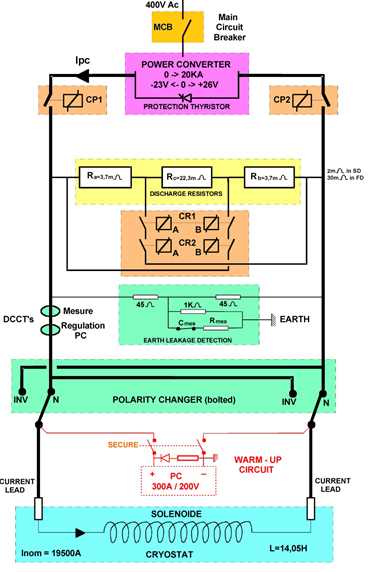The Compact Muon Solenoid (CMS) is a general-purpose detector at the Large Hadron Collider (LHC). It has a broad physics programme ranging from studying the Standard Model to searching for extra dimensions and particles that could make up dark matter.
The CMS detector is built around a huge solenoid magnet. This takes the form of a cylindrical coil of superconducting cable that generates a field of up to 4 Tesla. The field is confined by a steel yoke that forms the bulk of the detector’s 14,000-tonne weight.
The power circuit for the solenoid is made of a power converter which provides a direct-current (DC) of up to 20kA to the solenoid windings via large copper bus bars.

This converter has a double quadrant and can ramp up and down the magnet current with positive and negative voltage at its DC output. Three resistors in parallel to the power converter are used in two configurations to dump the stored energy of the magnet. This dump occurs when the switch breakers CP1 and CP2 are opened and can be configured as either slow (2mΩ dump resistance) or fast (30mΩ dump resistance) by opening and closing the CR1 and CR2 contactors. Safety features include an earth circuit connected to the cavern electrical ground which prevents the power circuit voltage from floating and a direct-current current transformer (DCCT) used to measure the circuit current.
The new Freewheeling Thyristor (FWT) system for the CMS solenoid shall support a discharge of 20 kA current in a continuous mode to handle a full discharge of the CMS solenoid and allow specific intervention in the system level in case of system failure.